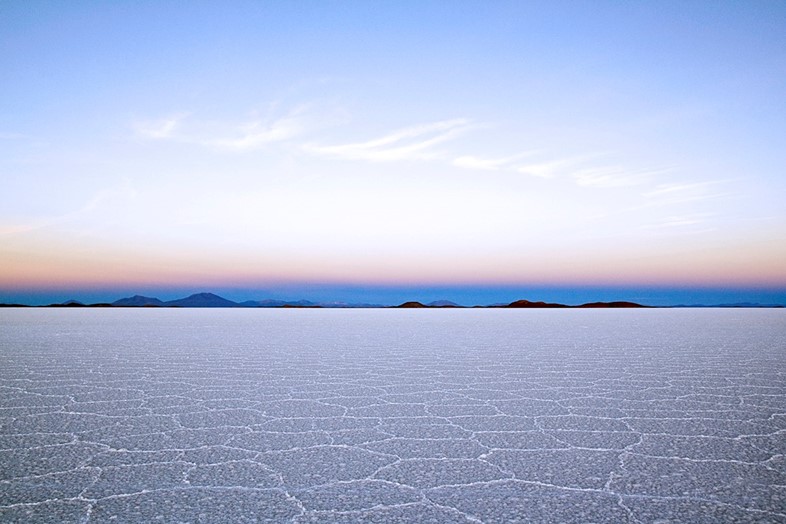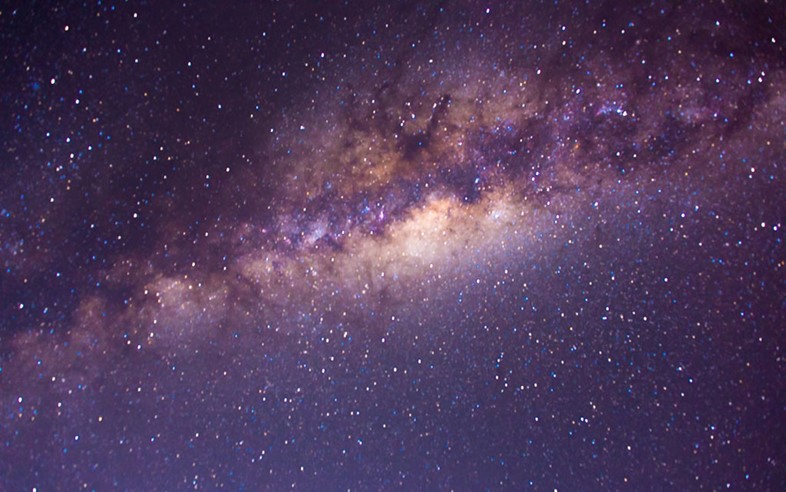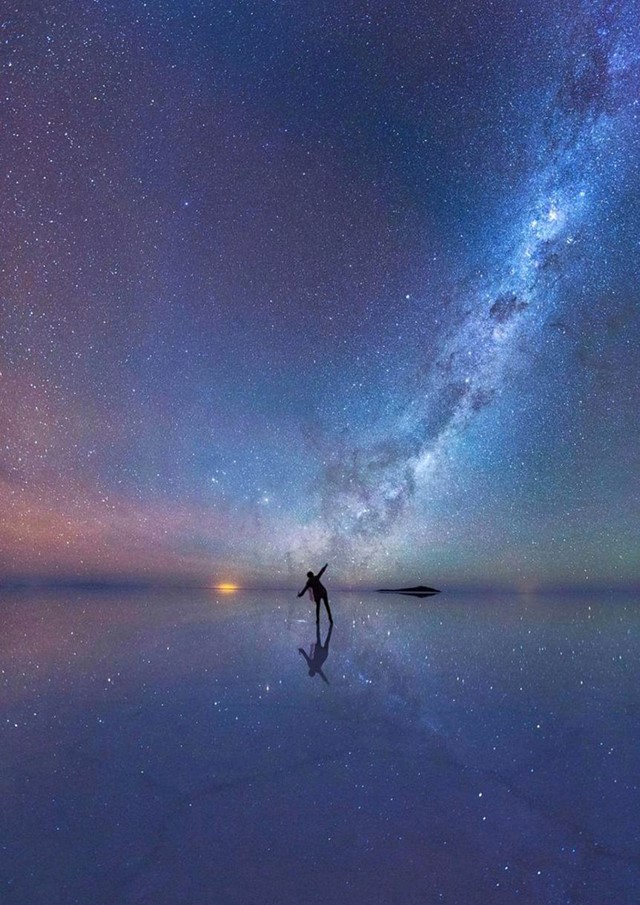super/collider takes us on a voyage to the Bolivian salt flats for an immersive, intergalactic experience
Where on Earth?
Salar de Uyuni, Bolivia
GPS Coordinates: 20°8′S 67°29′W
Did you know there is a place on the planet where you can stand, without a spacesuit, breathing the Earth’s oxygen-rich air, but feel like you’re drifting in outer space amid an infinite sea of stars? It’s possible, every winter, in the vast Salar de Uyuni salt flats of Bolivia – but we’re gonna make you read on to find out how. First, we need to explain exactly where and what the Salar is, and what makes it so unique.
Located in the southwest of Bolivia near the crest of the Andes mountain range, the Salar de Uyuni is the world’s largest salt flat – a vast expanse of dazzling white created by salts and minerals from the surrounding mountains collecting and pooling in a basin that stretches over4000 square miles. Seen from space, Uyuni and its smaller neighbour the Salar de Coipasa look like frozen lakes or massive icecaps – their pure white glistening against the surrounding beige of the Andes and the dark green of the Amazon rainforest further east in the country.

What on Earth?
The salt flats and several surrounding lakes were once part of a much larger prehistoric lake called Minchin. As it slowly dried it formed smaller lakes and eventually, in the areas where too few rivers existed to maintain a permanent body of water, two giant salt flats. More poetically, the indigenous Aymara people tell of how the local volcano/diety Tunupa wept one day while breast-feeding her son; mixing milk and tears to form the Salar. Scientifically, it’s actually made up of a cracked crust of salt covering a mineral-rich layer of sodium chloride, lithium chloride and magnesium chloride in water. This briny soup beneath the salt is a rich source of lithium – an element now highly in demand for the lithium-ion batteries that power our daily devices.

Beyond creating an surreal blank backdrop for tourists to take those annoying ‘zany’ photos, the Salar de Uyuni has some unique optical properties. Because of its brilliant surface, its incredibly flatness and the clean, thin atmosphere above it, the Salar de Uyuni is regularly used to calibrate altitude-reading instruments on orbiting satellites. The outer space connection climaxes between December and March, however, when the rainy season turns the salt flats into a giant mirror. Wade out into the Salar on a clear, calm night, wait a little while for the water to settle and it suddenly feels like you could be floating in space, with the stars, planets and vast arc of the Milky Way reflected above and underneath you in a giant 360° sphere.

How on Earth?
The gateway town to visit the salt flat is Uyuni, about 10 hours south of the capital, La Paz. Sergio Ballivian Photo Tours are running trips specifically focussed on photographing the flooded Salar this winter. For more, visit here.
